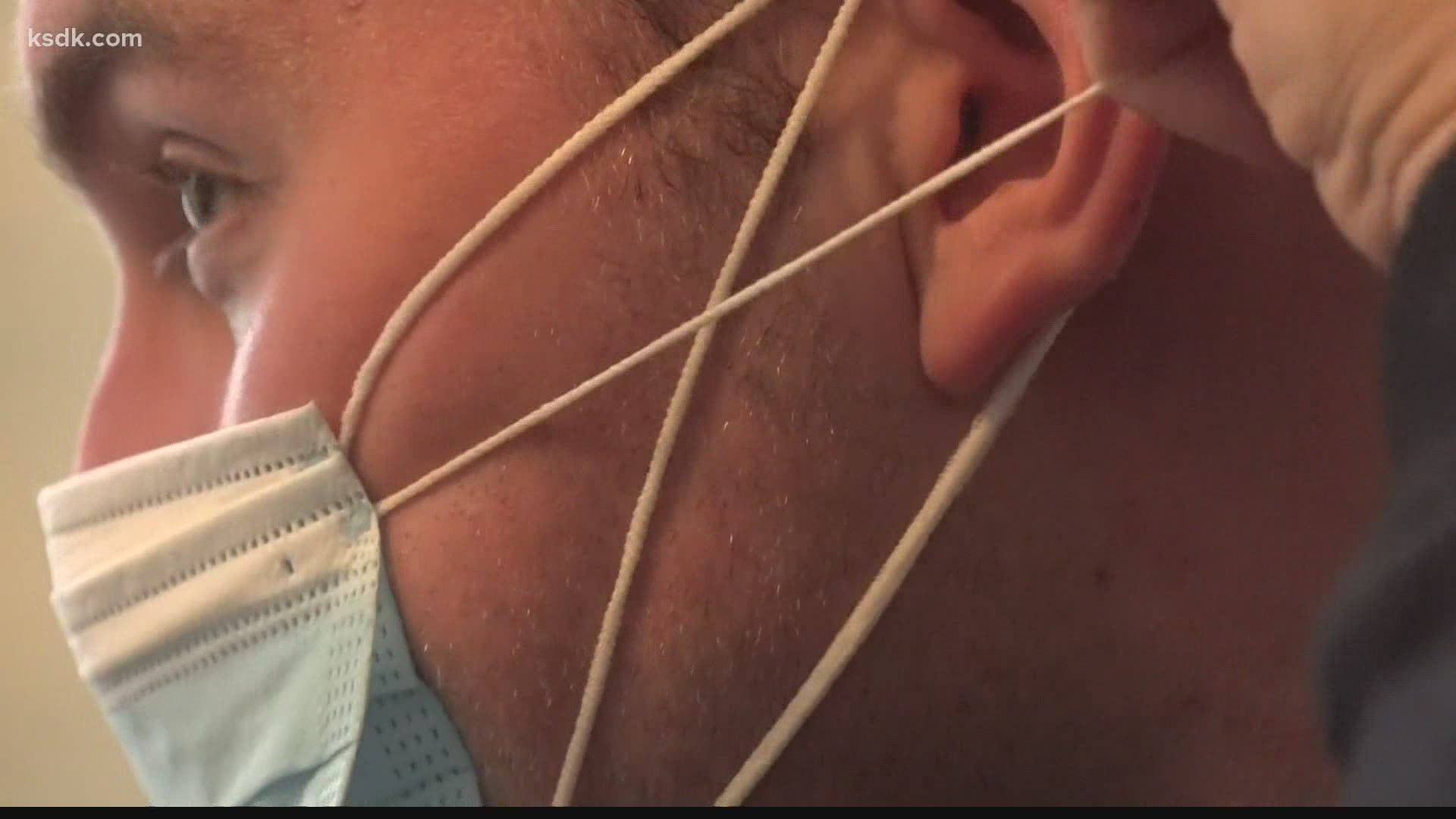ST. LOUIS — Frigid weather outside could cause some condensation inside your face mask.
Dr. Tom Landholt works with Mercy Clinic Primary Care in Arnold.
"If they get wet, they aren’t very effective," Dr. Landholt said.
"Just like it does outside your water glass, when you fill it with ice in water, there’s ice forming on the outside because of condensation. The same thing as your warm breath is hitting the cold air, it’s going to condense right there on the mask," Dr. Landholt explained.
He said the cold temps could also cause your nose to drip.
"If you go to warm to cold, it causes a local reaction to the nose," he added.
Water keeps your breath from going through and filtering out viruses.
"Your exhale breath is shooting out the sides or top or bottom, it’s not longer being filtered," Dr. Landholt said.
Beyond internal moisture, snow and rain could add to the soiled mask.
Dr. Landholt's best advice? Have extra masks and change it out.
If you're wearing a reusable mask and it gets wet, the CDC recommends storing it in a plastic bag until you get home and you can throw it in the laundry.
If you're wearing a scarf or ski mask, it is recommended to wear it over the mask. But don't replace it entirely.
"Those aren’t substitutes for a good mask," Dr. Landholt said.
As for double masking, he says, the inner mask is the one going to get wet. If the outside one isn't wet, then you don't have to change that one.
It's the inner one you change out. If both become wet, change both.
He recommends, when it comes to a wet mask to simply change it and keep it dry.
If you wear glasses, find a mask that fits closely over your nose or has a nose wire to help reduce fogging.
Using an antifogging spray can also be helpful.

